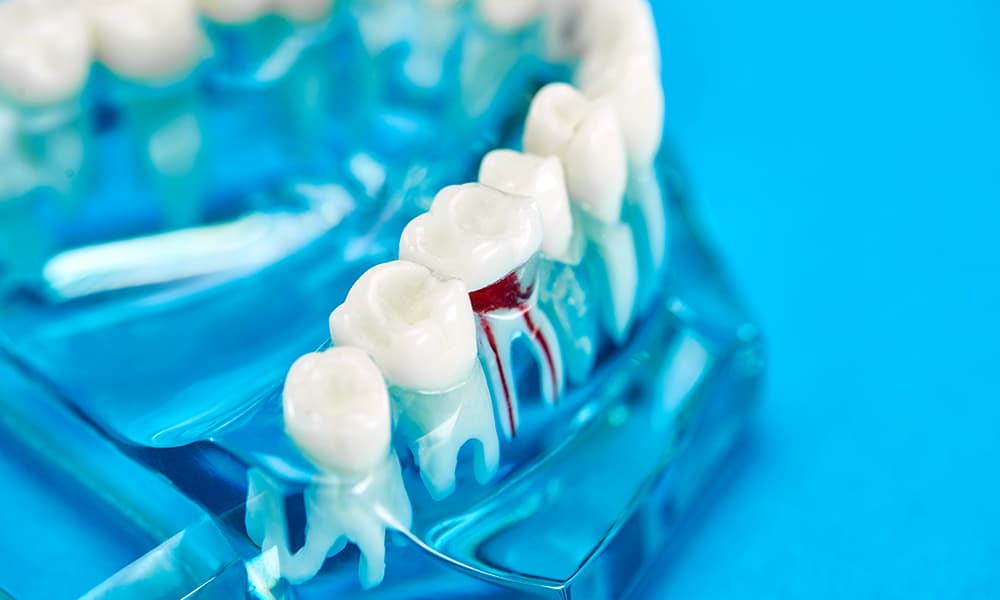Periodontics
Root Amputation

An advanced dentistry technique called root amputation involves removing one root from a tooth with several roots. A crown or filling is then used to stabilize the tooth and restore its full functionality. The molars at the rear of the mouth are the multi-root teeth that respond well to the root amputation technique. Depending on whether they are located in the upper or lower jaw, these big, flat teeth have two or three roots.
The main goal of root amputation is to prevent the extraction of a damaged or unhealthy tooth. The root amputation treatment allows for the retention of a healthy natural tooth, which most periodontists think is the best option. Custom-made tooth replacements, elaborate bridgework, and dental implants can be costly and time-consuming. In general, root amputation is less costly and may be finished in one to three quick sessions.
When will a root amputation be required?
It’s essential to remember that only healthy teeth can have their roots amputated. A tooth will be removed even if it is a “key” tooth if it is infected, severely shattered, or has another type of damage. Teeth that are good candidates for root amputation have healthy tooth surfaces, solid bone support, and sound gum tissue below.
Root amputation can result from a number of issues, including:
- Teeth with cracked, chipped, or damaged roots.
- Germs that have been incorporated into the root’s structure.
- Severe bone loss caused by periodontitis in a specific location.
- Tooth decay in a concentrated region of the tooth.
What Happens During a Root Amputation?
It is required to undertake root canal therapy prior to root amputation. Cutting deep into the tooth, where blood vessels and nerves are found, represents the actual amputation. Due to this, it is necessary to remove the pulp of the tooth, which contains these arteries and nerves, before resecting the roots. A local anesthetic will be used throughout the root canal and amputation procedures.
To thoroughly expose the afflicted tooth’s roots during the root amputation surgery, a minor gum incision will be made. The tooth’s root will be separated from the tooth’s crown and then pulled out. The entire region will be cleaned with saline solution to get rid of any lingering bacteria. After that, sutures (stitches) will be used to close the wound.
Lastly, the tooth will be secured with a temporary crown or filling. Painkillers, antibiotics, and a medicated anti-microbial mouthwash may be administered, depending on the details of the condition. The gum will be healed and the sutures removed after 7–10 days. Now, preparations can be made for the placement of the permanent crown or filling.
Please get in touch with our clinic and ask for Dr. Elliott Weidman, our periodontist, if you have any questions or concern regarding root amputation.

Book Appointment
Do you need to see a dentist? We’re here to help. Book your next dental visit with ease.
FREE IMPLANT CONSULTATION
CATEGORIES
- Cracked tooth
- Avulsed tooth
- Broken, lost, or loose crown
- Gum abscess
- Broken denture
- Toothache
- Head injury such as a fall
- Loose implant
FOLLOW US

Book Appointment
Do you need to see a dentist? We’re here to help. Book your next dental visit with ease.

Book Appointment
Do you need to see a dentist? We’re here to help. Book your next dental visit with ease.
FREE IMPLANT CONSULTATION
CATEGORIES
- Cracked tooth
- Avulsed tooth
- Broken, lost, or loose crown
- Gum abscess
- Broken denture
- Toothache
- Head injury such as a fall
- Loose implant
FOLLOW US
Take a peek inside our dental office.
What Our Practice Looks
Book an Appointment
Fill the form below to book an appointment or call
1-(888) 993-0007 for emergency

Mon - Thu: 8:30 AM - 5:00 PM
Alternating Fri: 10:00 AM - 3:00 PM
Follow Us
Contact Us

Mon - Thu: 8:30 AM - 5:00 PM
Alternating Fri: 10:00 AM - 3:00 PM
Follow Us
Contact Us
© All Rights Reserved aestheticimplantdentistry.ca
Privacy Policy | Terms of Use | Sitemap
A Dentistfind Website



